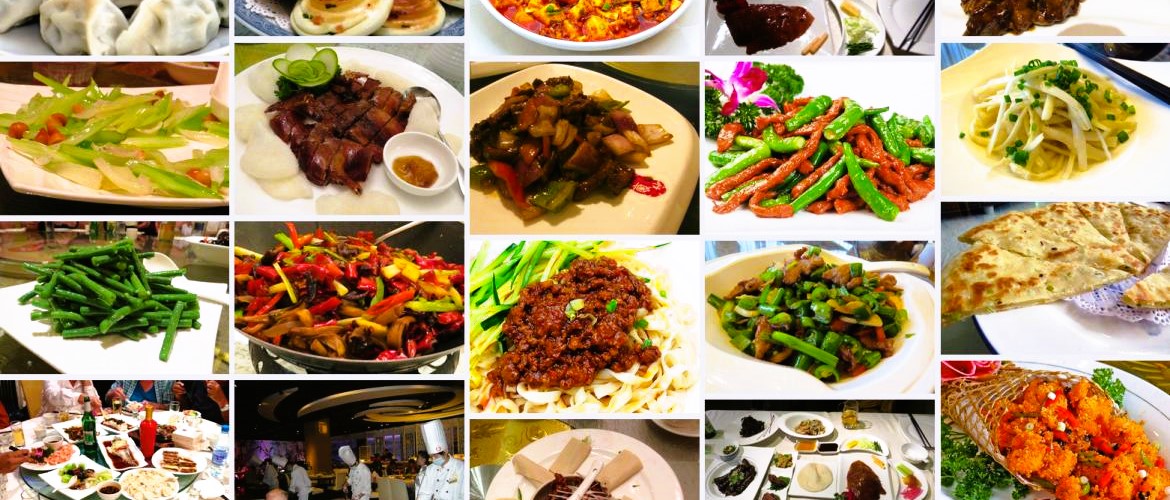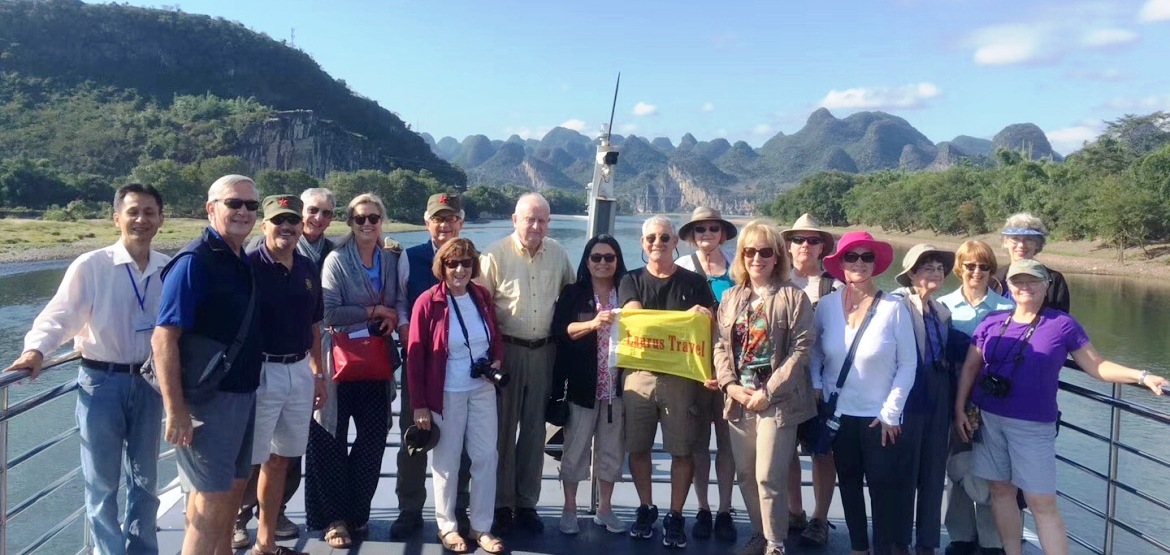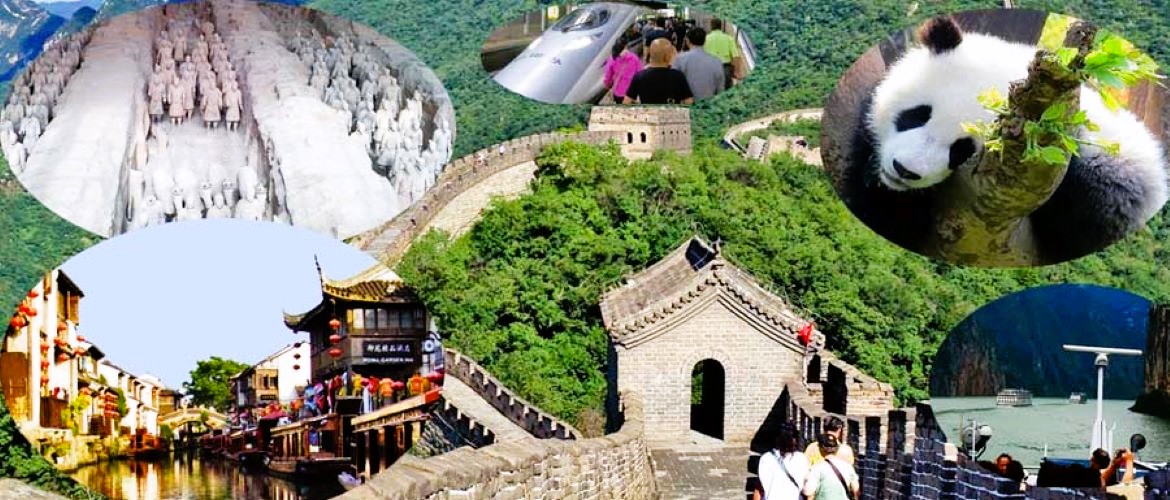China tours from Australia are much more affordable than China tours from the United States and Canada due to the availability of a good number of daily direct flights between Australia and China.
While costs of visiting most Western countries have soared post-pandemic, China remains affordable due to its relatively sluggish economic growth in the past few years. In fact, the price for a centrally located 3-star hotel in Tokyo or Kyoto during cherry blossom season or autumn foliage season would put you in an international standard 5-star hotels such as Marriott and Four Seasons in Beijing, Shanghai and Hong Kong. As far as we can see, this pattern should remain unchanged for at least another year (2025).
The China National Immigration Authority announced on July 1, 2024 that Australians (and New Zealanders too) can stay in China for 15 days visa-free per entry. This announcement is well received by Australians.

If you are planning to visit China, please consider going with Laurus Travel. We have been running fully guided tours to China since 1998. Our premium small-group China tours hold special appeal to travellers interested in culture, history, fine food and meaningful interactions with the locals. Among the important features that distinguish us from the China tour companies are:
- Small group size – average 15, maximum 20
- Expert guides handpicked by company owners
- Inter-city travel mostly by high-speed train
- Fun activities such as hiking and cultural shows
- No annoying forced shopping of any kind
- Quality meals at non-tourist restaurants
- Unlimited supply of bottled water during group activities
- Great Wall visit at Mutianyu including cable car rides
Laurus Travel is based in Vancouver, Canada with a clientele spanning the globe. Over the years, we’ve had many Australian customers and we look forward to adding you to our list of customers from Australia.

China Tour Reviews by Customers from Australia
My father and I completed a shortened version of a standard tour with a group total of 8 members. We organised this at short notice from Australia and the Laurus office was very good and responsive to queries and requirements via email. The tour itself went very smoothly with all logistics thought through and executed very well locally by the tour guides, all we had to do was go along for the ride, relax and take in the amazing sights and experiences of China. The local tour guides were friendly, very knowledgeable, and humorous; it was a pleasure to learn from them and spend time with the other tour members.
Both Jacob (Beijing)and William (Xian) were informative, humorous and attended to all the group’s needs. They are real assets to Laurus. Sheraton (Beijing) and Sheraton (Xian) both very good in terms of room and breakfast. Sheraton (Xian) closer to Metro station, so easier to get around without use of taxis. Sheraton (Beijing) better in terms of pool and spa facilities. The meals were exceptional, great choice of local restaurants throughout tour with good range of meals and opportunity for the tour group members to interact.
Great value for money!
Steve B.
Melbourne, Victoria, Australia
As an Australian I was unfamiliar with Laurus Travel until I did my research and saw the testimonial from another Australian and Frommer’s recommendation. It proved a wise choice – the tour group was not too big and a great bunch of people, the hotels and food were of excellent quality and the calibre and knowledge of the local guides made the trip highly informative and memorable. Best of China itinerary was a great mix of archaeological, cultural and scenic highlights. No forced shopping detours or commissions to local guides. For Australians wanting to avoid a big group, packaged tour experience with a better standard of amenities definitely worth considering this Canadian “China specialist” company.
Karen C
Sydney, Australia
[ more reviews ]

Recommended China Tours for Guests from Australia
We have many China tour packages ideal for guests from Australia. The 14-day Essential China below is highly recommended.
|
AWESOME is how I would describe my 14 day Essential China Tour. Tour content, accommodations, meals, & domestic travel all met high standards. Heather, you run a first class organization. Your representatives – Jacob, Elaine, Paul, David, Alex – were very professional, well informed, congenial & engaged, providing extraordinary service & engagement throughout the trip. Also, internal support staff – Yuki, Adrianne – were very helpful. Despite this being my first experience with Laurus, I can comfortably recommend you to friends & colleagues & would confidently consider Laurus first in my future travels. A sincere thank you, Paul D |

Shanghai – Beijing – Xi’an – Guilin – Hong Kong
This fast-paced luxury China tour is a perfect choice for the time-pressed looking for a well-rounded introduction to both the traditional and modern China. Trip highlights include the Great Wall at Mutianyu, the Forbidden City, the Temple of Heaven, the Summer Palace, the Terracotta Army and a day cruise on the picturesque Li River in Guilin.
Important Features
- Small group size – average 15, maximum 25
- Tips for local guides and drivers included
- Inter-city travel by high-speed train except for one city pair (Xi’an/Guilin)
- No annoying forced shopping of any kind
- Quality meals at non-tourist restaurants
- Unlimited supply of bottled water during group activities
- Complimentary Wi-Fi in all hotels
- Great Wall visit at Mutianyu with cable car rides
Options Available
• Half-day Jewish heritage tour in Shanghai
• Peking Opera show with dinner in Beijing
• Tang Dynasty cultural show with dinner in Xi’an
Meal Code: B = breakfast / L = lunch / D = dinner
Day 1/Mon: Departing for Shanghai
Depart from a city of your choice and lose a day upon crossing the International Date Line.
Day 2/Tue: Arrival in Shanghai
Meet the driver on arrival for transfer to the hotel. You’ll have the balance of the day at leisure.
Day 3/Wed: Shanghai (B/L/D)
With a population of 24.9 million (2021), Shanghai is China’s biggest city, which delights the visitor with its futuristic skyline and historical landmarks.
Following the tour orientation we visit Jade Buddha Temple located in an old neighbourhood, the famous waterfront promenade known as the Bund, and the Yu Garden in the old town centre. We wrap up the day with a drive through the glitzy financial district of Lujiazui on the opposite side of the Bund across Huangpu River.
Day 4/Thu: Shanghai (B)
Free day to explore on your own. We recommend Shanghai Museum and the Urban Planning Exhibition Center nearby. Shanghai Museum is frequently cited by visitors as one of the best of its kind in China.
Day 5/Fri: Shanghai – Beijing (B)
After breakfast we ride’s the world’s fastest train (350 km/h) to Beijing.
The capital of China, Beijing is a world-class cultural and educational centre with a population of 21.9 million (2020), ranking it China’s second biggest city behind Shanghai. Beijing is renowned for its opulent palaces, temples, and huge stone walls and gates – treasures that make it the most popular tourist city in China by the number of visitors it receives every year.
Beijing was already a strategically important city in northern China for centuries when Kublai Khan (1215-1294) decided to move his capital here from Karakorum in Mongolia. With the collapse of the vast Mongol empire in 1368, Beijing, known as Da Du or Grand Capital at the time, lost its status as the country’s capital but regained it in 1420 when the imperial court of the successive Ming Dynasty moved here from Nanjing. Beijing continued to serve as China’s capital after Manchu tribes dethroned the last emperor of the Ming Dynasty in 1644 and established the Great Qing Empire (Qing Dynasty), which lasted until 1912.
Free afternoon to explore on your own. Optional tour of Lama Temple is available upon request. Lama Temple was built in 1694 as residence of Prince Yong, one of the sons of Emperor Kangxi. After Prince Yong ascended the throne as Emperor Yongzheng in 1722, half of his former residence was turned into a lamasery – a monastery for monks of Tibetan Buddhism.
Day 6/Sat: Beijing (B/L/D)
We begin today with a visit to the Forbidden City. Officially known as the Palace Museum, the Forbidden City was the place where the emperors of the Ming (1368-1644) and Qing (1644-1912) Dynasties lived and carried out their administration. Construction of the Forbidden City took 14 years (1406-1420) to complete. The complex consists of 980 buildings and covers 72 hectares or 180 acres. Though the Qing Dynasty was overthrown in 1912, the royal family was allowed to continue to live in the Forbidden City till 1924, when the last emperor, Pu Yi, was driven out of the imperial palace. Declared a World Heritage Site by UNESCO in 1987, this is the largest collection of preserved ancient wooden structures in the world.
Next up is Tian’anmen Square. Located in the heart of Beijing, the square measures 880 metres from north to south and 500 meters from east to west. Said to be the largest public plaza in the world, Tian’anmen Square has the capacity to hold one million people. The imposing Tian’anmen Tower sits at the north end of the square while the Monument to the People’s Heroes dominates the centre. The square is flanked by The Great Hall of the People (west) and the National Museum (east). Chairman Mao’s Mausoleum and Qianmen (Front Gate) are located in the south of the square. One of the top 16 tourist attractions in Beijing, Tian’anmen Square is also the witness of the Chinese people’s great struggles for democracy and personal freedom since 1919.
Afternoon sightseeing takes place at the Temple of Heaven, another UNESCO World Heritage Site. Situated in southeastern Beijing the Temple of Heaven is China’s largest extant sacrificial temple where, during the Ming and Qing Dynasties, the emperors conducted the elaborate and most exalted sacrifices addressed to “the Supreme Ruler of the Universe.” Construction of the temple started in 1406, during the reign of the Ming Emperor Yongle, and took 14 years to complete. The temple was expanded under the Qing emperors Qianlong (1736-1796) and Jiaqing (1796-1820). Occupying 2.73 square kilometres (roughly 1,700 by 1,600 metres), the area of the Temple of Heaven is more than twice that of the Forbidden City.
The famous Hongqiao Pearl Market, the largest pearl market in the world, is right across the street from the Temple of Heaven. Recommended by numerous guidebooks for freshwater pearls, Hongqiao teems with domestic and international shoppers. If you are interested, please ask the guide to drop you off there. However, you’ll need to get back to the hotel by taxi, which costs less than 10 US dollars.
Today’s dinner features Beijing roast duck, a famous local dish.
Day 7/Sun: Beijing (B/L)
After an early breakfast we embark on a full-day excursion to the legendary Great Wall at Mutianyu, 75 km northeast of the city.
Zigzagging over 6,000 kilometres from east to west along undulating mountains, the Great Wall was built to hold off tribal invaders from the north. As history shows, the Wall failed the Chinese rulers miserably, especially in the case of Kublai Khan whose cavalrymen swept across China from the Mongolian steppe, thus the beginning of the Yuan Dynasty (1279-1368).
Construction of the earliest sections of the Wall started in the 7th century BCE. A major renovation started with the founding of the Ming Dynasty in 1368 and took 200 years to complete. The wall we see today in Beijing is almost exactly the result of this effort.
Day 8/Mon: Beijing – Xi’an (B/L/D)
We begin our sightseeing today with a visit to a traditional hutong neighbourhood. Hutong refers to an ancient alleyway with siheyuan or ”4-sided courtyard house” on both sides. The name hutong dates back to the Yuan Dynasty (1279 – 1368 CE). According to some experts, the word originated from the Mongolian language, in which it is pronounced as hottog and means “well.” In ancient times, people tended to gather and live around wells. Therefore, the original meaning of hutong should be “a place where people live around”.
Next on our schedule is the Summer Palace, a well preserved UNESCO World Cultural Heritage Site. The imperial resort was first named Garden of Clear Ripples, which was burnt down by the allied forces of Great Britain and France in 1860 at the end of the Second Opium War (often referred to as the Arrow War by the British). Reconstruction started 25 years later and was completed in 1895 when the name was changed to Yi He Yuan (Garden of Good Health and Harmony). The design gives prominence to Longevity Hill, as well as Kunming Lake south of the hill. The sprawling complex covers an area of 290 hectares and the buildings inside consist of over 3,000 bays.
We travel to Xian by high-speed train (#G87, 14:00/18:23). The 4-hour-23-minute rail journey through fertile farmland dotted with villages provides the visitor with an excellent way to enjoy the beautiful countryside. The track we travel on between Beijing and Zhengzhou is part of the new 2,298 km high-speed railway linking Beijing and subtropical Guangzhou and is also the longest high-speed rail line in the world. In the past 20 years China has been on a building spree expanding the country’s rail network and upgrading existing railways. Its high-speed rail service rivals France’s TGV and Japan’s “shinkansen” in terms of safety, speed, comfort and punctuality.
Day 9/Tue: Xi’an (B/L)
With a history going back over 3,000 years, Xi’an served as China’s capital of several ruling dynasties including the Han (206 BCE – 220 CE) and the Tang (618 – 907). It is home to the famous Terracotta Army and the eastern terminus of the ancient Silk Road – a network of trade routes connecting China proper with regions as far as the Mediterranean beginning in the second century BCE.
We spend the morning visiting the Terracotta Army. Built on the excavation site, the museum is located 30 km east of the city. Designed to follow the first emperor of the Qin Dynasty (221-206 BCE) into eternity, the Terracotta Army represents one of the greatest archeological discoveries of the 20th Century.
After lunch we return to the city for a stroll on the ancient city wall. Declared a national treasure by the State Council in 1961, the wall (first built in 1370) encircles an area of 14 square kilometres. It runs 13.7 kilometres long and measures 12 metres in height with a thickness at the base between 15 to 18 metres.
Day 10/Wed: Xi’an – Guilin (B/L)
Morning sightseeing begins at Shaanxi Provincial Museum. The modern, well-organized museum was completed in 1992 and traces the history of Xian from prehistory to the Qing dynasty (1644-1912). The extensive galleries and exhibitions offer the visitor an excellent introduction to the area that greatly improves understanding of the numerous historical sites in and around the city.
We then visit the grand mosque in the old town centre and the adjacent Muslim bazaar. The mosque was established in the 8th century but the majority of the complex was constructed in the Ming Dynasty (1368-1644). It was further expanded in the Qing Dynasty. Unlike most mosques in Middle Eastern or Arab countries, this mosque is completely Chinese in architectural style. It has neither domes nor traditional minarets.
Our late afternoon or evening flight to Guilin takes 2 hours. A small city by Chinese standard, Guilin has long been renowned for its unique scenery. The name Guilin literally means ‘forest of sweet osmanthus’, due to the prolific growth of these flowers throughout the city.
Day 11/Thu: Guilin (B/L)
We begin today with a five hour cruise down the Li River. The 83 km stretch of river between Guilin and Yangshuo affords breathtaking scenery as the river snakes through tall karst mountains, gigantic bamboo growths, and picturesque villages — sights that have inspired countless poets and painters for generations.
We will disembark in Yangshuo after lunch on the ship, then drive back to Guilin. We wrap up the day with a quick tour of Fubo Hill (elevation 63 metres) located 2 km from the hotel. Walking back to the hotel along the Li River is a perfect way to soak in the beauty of the city.
Day 12/Fri: Guilin – Hong Kong (B)
Free morning to explore on your own in Guilin. We depart for Hong Kong by high-speed train (3 hours) in the afternoon.
Hong Kong (meaning ‘fragrant harbour’) is one of the two special administrative regions of the People’s Republic of China, along with Macau. Comprised of more than 260 islands, the territory is located on the eastern side of the Pearl River Delta, bordering Guangdong Province in the north and facing the South China Sea in the east, west and south. Hong Kong was a British colony from 1842 until the transfer of sovereignty to the People’s Republic of China in 1997. The Sino-British Joint Declaration (effective 1985) and the Basic Law of Hong Kong (effective 1997) stipulate that Hong Kong operate with a high degree of autonomy until at least 2047, fifty years after the transfer. Under the policy of ‘one country, two systems’, the Central People’s Government is responsible for the territory’s defense and foreign affairs while Hong Kong maintains its own systems of governance based on British systems/institutions of common law, policing, customs policies, immigration policies, and so forth.
Day 13/Sat: Hong Kong (B/L)
Morning sightseeing of Hong Kong begins with a ferry ride across Victoria Harbour from Tsim Sha Tsui to Central. The heart of Hong Kong’s business district, Central is home to the regional headquarters of many multinational financial services corporations. The Consulate General and the consulates of many countries are also located in this area, in addition to Hong Kong’s government itself.
We then proceed to the top of Victoria Peak. Also known as Mount Austin or ‘The Peak’ among locals, Victoria Peak is located in the western half of Hong Kong Island with an altitude of 552 meters (1,811 feet). The peak offers sweeping views over Central, Victoria Harbour and the surrounding islands. We have dinner at the romantic Peak Lookout Restaurant, which offers (aside from the breathtaking view) a wide selection of Chinese, Western, Indian, and Southeast Asian dishes.
Afterwards, we will head to Stanley Market. But on the way, we will make a quick stop at Repulse Bay, an area where the private residences of Hong Kong’s ‘the rich and the famous’ overlook the well maintained golden beaches. We wrap up the day after a visit to Stanley Market – a traditional old open-air market known for bargains.
This afternoon is set free for you to explore on your own.
Day 14/Sun: Returning Home (B)
The tour ends this morning. Transfer to the airport on your own for return flight. You can go by taxi (approx. US$30) or the airport limousine bus which makes a stop at the hotel. Alternatively, you may ride the hotel’s free shuttle bus to Tsim Sha Tsui Station, from which the Airport Express Train (US$12) delivers you right into the airport terminal in 21 minutes.

| City | Nights | Hotel | Category |
| Shanghai | 3 | Sheraton Shanghai Hongkou or similar | luxury |
| Beijing | 3 | New Otani Chang Fu Gong or similar | luxury |
| Xian | 2 | Sheraton Xian North City | luxury |
| Guilin | 2 | Sheraton Guilin | luxury |
| Hong Kong | 2 | Harbour Grand Kowloon | luxury |

